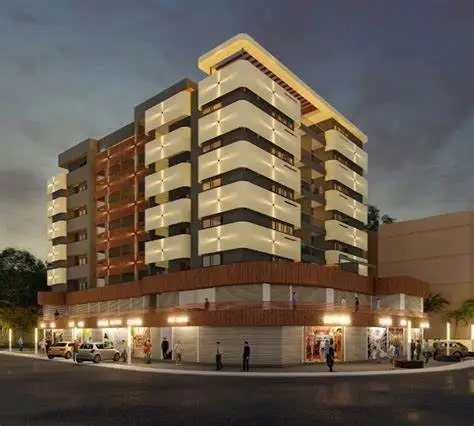When Does a Building Qualify for Redevelopment?
Old buildings often need major repairs or replacements. Redevelopment offers a structured way to rebuild such structures, providing safer and better homes.
But how do you know if your building qualifies? This guide covers the signs, rules, and steps involved. It’s designed for housing society members, apartment owners, and cooperative societies who want to take informed action.

What Is Building Redevelopment?
Building redevelopment means demolishing an old, unsafe, or uneconomical structure and constructing a new one in its place.
This process is commonly adopted by housing societies or private building owners when repair costs outweigh reconstruction costs or when structural audits reveal safety concerns.
Redevelopment involves multiple stakeholders: residents, developers, architects, and municipal authorities. The developer typically offers new flats, extra space, rent during construction, and better facilities in return for development rights.
The process can also unlock the full Floor Space Index (FSI) allowed under municipal laws, making better use of land.
For urban areas, especially Mumbai and Pune, redevelopment is an important solution to address space constraints and aging infrastructure. Over the past decade, thousands of societies have upgraded their living conditions through this model.
In most cities, local development control rules, cooperative society laws, and state housing policies regulate redevelopment. Before starting, understanding the basics helps ensure smoother coordination and avoids legal hurdles.
Eligibility Criteria for Redevelopment
For a building to be eligible for redevelopment, it must meet certain technical, legal, and administrative benchmarks.
These are defined by urban local bodies like municipal corporations and governed by redevelopment guidelines and housing policies.
Here’s a breakdown:
Building Age and Structural Condition
A building older than 30 years is often a key indicator of redevelopment eligibility.
However, age alone isn’t enough. A structural audit must be carried out by a licensed structural consultant. If the audit report deems the building “dilapidated,” “unsafe,” or “unfit for habitation,” it strongly justifies redevelopment.
Issues like severe leakage, exposed reinforcement, major cracks, and corrosion are also red flags. Societies can approach consultants or registered redevelopment advisors to get this report.
This is usually the first and most crucial step in confirming eligibility.
Ownership and Occupancy Status
For redevelopment to proceed, clear ownership records are essential.
In the case of housing societies, at least 70% of members must give written consent for redevelopment. For privately owned buildings, all owners must agree.
Illegal occupants or unclear land titles can delay or halt redevelopment projects. Therefore, all property taxes, dues, and land use permissions must be up to date.
If members are in dispute, resolution through the cooperative registrar or court may be necessary before proceeding.
Government Guidelines for Redevelopment
Different states have different redevelopment policies. However, some common rules include:
- Minimum 30 years of building age
- Structural audit from a licensed professional
- Consent from 70% or more society members
- No legal encumbrances on the property
- Compliance with Development Control & Promotion Regulations (DCPR)
Cities like Mumbai and Pune also have additional FSI incentives for redevelopment projects under specific schemes like DCPR 2034.
Always consult your local municipal corporation or a redevelopment consultant before proceeding.
Steps Involved in Redevelopment
Redevelopment is a structured, multi-phase process. Key steps include:
- Conduct a structural audit
- Hold a society meeting and pass a resolution
- Invite proposals from registered developers
- Form a redevelopment committee
- Scrutinize and shortlist developers
- Sign a Memorandum of Understanding (MoU)
- Appoint legal and technical advisors
- Draft and register the Development Agreement
- Vacate the premises
- Receive rent and/or alternate accommodation
- Project execution and flat handover
Timelines may vary between 24 to 36 months depending on location, approvals, and builder performance.
Benefits of Redevelopment for Residents
Redevelopment offers multiple advantages for flat owners and society members:
- New and structurally safe flats
- Additional area (often 10–30% extra)
- Modern amenities (lifts, parking, security)
- Higher property valuation
- No repair burden for the next 20–30 years
- Rent during construction
- Corpus fund for society welfare
In addition, developers handle legal permissions and municipal approvals, saving the society time and money.
These benefits are long-term and often more cost-effective than continuous repair work.
Key Documents Required
Ensure these documents are available:
- Structural Audit Report
- Society Registration Certificate
- Latest Property Card & Land Title
- Building Plan Copies
- Occupant Details
- No Dues Certificate
- Consent Letters from 70% members
- Society Resolution Copy
- Architect’s and Advocate’s Appointment Letters
Missing documents may cause delays in approvals.
Common Challenges Faced
Despite clear rules, redevelopment often faces obstacles:
- Disagreements among society members
- Delay in municipal permissions
- Unprofessional developers
- Legal disputes on land ownership
- Lack of clear project timeline
- Inadequate communication with residents
To avoid these, societies should appoint a Project Management Consultant (PMC) and legal advisor at the very beginning.
Transparency, timely updates, and clear agreements help build trust among members and speed up the process.
Conclusion
Redevelopment is a smart solution for aging buildings that are no longer safe or economical to repair.
If your building is over 30 years old, shows structural damage, and has majority member approval, you may qualify.
Begin with a structural audit. Involve a PMC. Choose a trusted developer. Follow the legal steps carefully.
The reward is a brand-new home with better facilities, higher value, and peace of mind.
Recent Post
-
Difference Between Preliminary and Detailed Structural Audit
-
PMC for Buildings: The Smartest Way to Manage Repair & Redevelopment Projects
-
What is NDT Testing and Why It’s Crucial for Building Safety
-
Legal Guidelines and Reports Required Before Redevelopment
-
Why Redevelopment Without Proper Audit Can Lead to Future Failures


Nice explanation! It really cleared my doubts about the building redevelopment process. Also, if you’re looking for farmland to build your dream home, do check out http://www.mahabhoomi.site
“I found this blog on when a building qualifies for redevelopment very informative and easy to understand. Thanks for sharing such useful insights! By the way, if anyone is also looking for the best chess training, I’d recommend checking out smca64.com
– it’s a great place to sharpen your skills.”
Great article! Redevelopment is definitely an important step when buildings become old, unsafe, or uneconomical to repair. It’s good to see awareness being created around this.
For anyone interested in long-term investment opportunities beyond urban redevelopment, I would also recommend exploring farmland property options. Websites like mahabhoomi.site provide details about farmland property, which can be a valuable asset for future growth.